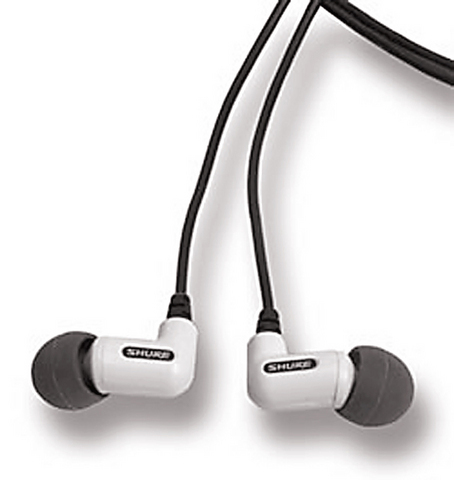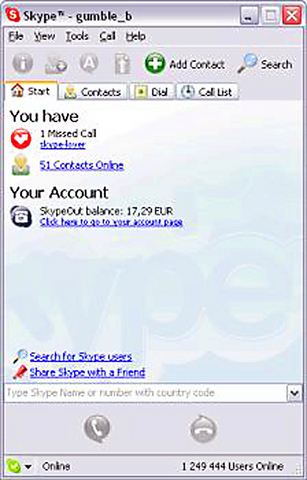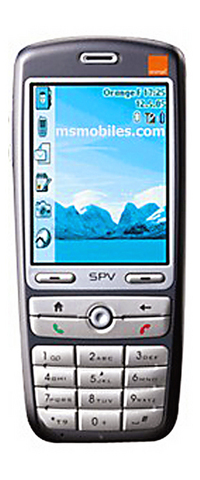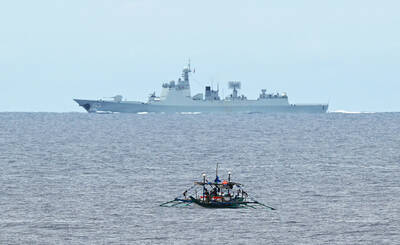You've spent US$200 on a MP3 player, which came with a free pair of headphones. Now, are you ready to spend about the same amount to get a better pair of headphones like the Shure E3C set. What you will get, for certain, is a lot more quiet: the Shure's earbuds are intended to block out extraneous sound (97 per cent, the company says) so all you should hear is the blissful sound of Bach or whichever extreme death metal group has caught your fancy this week.
The experience of inserting the buds into your ears is initially discomforting; you feel as though you're disobeying those warnings from your parents not to stick things into your ears.
I tried them on a number of train and subway journeys and found it a mixed experience. The cord is quite thick, so walking can dislodge the earbuds, losing clarity. Getting the earbuds correctly placed and balanced is difficult; often one ear or the other seemed to get more input. And when they shifted, the treble and bass dropped abruptly. While they're terrific at cutting outside sound, if you try to sing along with a favorite song your voice seems alarmingly close.

PHOTOS COURTESY OF MANUFACTURER
-- Charles Arthur,
The Guardian, London
Google may be the leading search engine brand, but very few people know about the company's additional products such as Google Earth, Google Local, Google Mobile and Picasa. To remedy this, the company has opened its first internet cafe-cum-live-laboratory at London- Heathrow airport.

Initially, the trial will run until Christmas, but it could continue into next year. "We have already been offered the space for a second month," explains Andy Ku, Google's product marketing manager. "We might also launch at airports and other venues across the world."
For travelers wanting to kill time before boarding their flight, Google Space is perfect. According to the company's research, the average traveler wastes more than nine hours a year waiting for flights at British airports. Rather than paying Heathrow's hotspot providers for Web access, at Google Space you can surf the net and read your e-mail for nothing. Ten Samsung M50 laptops have been provided, and members of staff are on hand to help.
Google is hoping travelers will try out its new products at the same time as checking their e-mail, and that appeared to be the case during our visit. The area has been developed with the traveler in mind, with images from Google Earth projected on to the walls and icons for Google's travel services on the desktop. One woman from Kansas was delighted when staff showed her how to use Google Local to find a hotel in Prague.

But the biggest hit was Google Earth. "It's absolutely amazing," said Taher Hussain, as Google Earth flew him home to Queenstown, New Zealand.
-- Chris Price
The Guardian, London
Ever since eBay announced in September it would splash out US$4bn on Skype, things have been surprisingly quiet for Internet telephony's most visible pioneer.
However, late last week Skype launched a new version of its software. Though there have been changes, the program -- which uses your computer to reroute telephone calls across the net -- remains fundamentally the same. Phone calls to other Skype users are free and connecting to numbers outside the system offers lower-than-normal network prices. You can buy a virtual phone number, or hook up an internet telephone handset to replace your landline.
The biggest change with Skype 2.0 is the addition of video calling. With the click of a button, users can connect their Web cam and make calls. Video is easy to set up, and the quality is better than most competitors. At the moment, the capability is limited to calls between Skype users only.
"There's a fast-growing, active base of people who have got used to using Skype to make calls," says Saul Klein, vice president of the company. "It's not going to be for everyone, and it's certainly not going to be in every circumstance, but to give people the ability to see one another as well as to talk to one another is going to be a very powerful thing."
Registrations have rocketed recently by around 15 million. The company now has more than 68 million registered users worldwide, and claims it is accepting around 35,000 new signups every day in China alone.
-- Bobbie Johnson
The Guardian, London
Released in 2002, the first Orange SPV was a true breakthrough. Not only was it the first smartphone to run using Windows and feature versions of Outlook, Windows Media and Word, it was also the first chunky phone with a comfortable Web surfing experience. There have been many incarnations of the SPV, the most important of which was last year's C500. Smaller than previous models, the C500 was easier to use and had a superb screen.
Earlier this year, Orange revamped the range again with the SPV C550, a handset that it billed as a music phone. Yet the C550, which was slightly chunkier than its predecessor, also included a 1.3 megapixel camera.
With the SPV C600, Orange has ditched the music buttons and added Windows Mobile 5.0. It is the first handset in Europe to use this operating system and it is certainly an improvement. Hitting the Start button now brings up an icon-based interface that is a cut above the previous menu options.
The other major upgrade is the C600's joystick control, which is far better than the previous rocker. It's more useful not just for navigating the menu system, but also if you use the phone for gaming.
The 1.3 megapixel camera also works well and takes shots with richer colors than many of its rivals, though those images tend to be a little bright.
In some ways, the SPV C600 is a missed opportunity. Wi-Fi would have been an obvious upgrade, not just for faster web browsing, but also to use with Skype. A Qwerty keypad would have been welcome, too, even if it added bulk.
-- Ashley Norris
The Guardian, London

Cheng Ching-hsiang (鄭青祥) turned a small triangle of concrete jammed between two old shops into a cool little bar called 9dimension. In front of the shop, a steampunk-like structure was welded by himself to serve as a booth where he prepares cocktails. “Yancheng used to be just old people,” he says, “but now young people are coming and creating the New Yancheng.” Around the corner, Yu Hsiu-jao (饒毓琇), opened Tiny Cafe. True to its name, it is the size of a cupboard and serves cold-brewed coffee. “Small shops are so special and have personality,” she says, “people come to Yancheng to find such treasures.” She

Late last month Philippines Foreign Affairs Secretary Theresa Lazaro told the Philippine Senate that the nation has sufficient funds to evacuate the nearly 170,000 Filipino residents in Taiwan, 84 percent of whom are migrant workers, in the event of war. Agencies have been exploring evacuation scenarios since early this year, she said. She also observed that since the Philippines has only limited ships, the government is consulting security agencies for alternatives. Filipinos are a distant third in overall migrant worker population. Indonesia has over 248,000 workers, followed by roughly 240,000 Vietnamese. It should be noted that there are another 170,000

In July of 1995, a group of local DJs began posting an event flyer around Taipei. It was cheaply photocopied and nearly all in English, with a hand-drawn map on the back and, on the front, a big red hand print alongside one prominent line of text, “Finally… THE PARTY.” The map led to a remote floodplain in Taipei County (now New Taipei City) just across the Tamsui River from Taipei. The organizers got permission from no one. They just drove up in a blue Taiwanese pickup truck, set up a generator, two speakers, two turntables and a mixer. They

Hannah Liao (廖宸萱) recalls the harassment she experienced on dating apps, an experience that left her frightened and disgusted. “I’ve tried some voice-based dating apps,” the 30-year-old says. “Right away, some guys would say things like, ‘Wanna talk dirty?’ or ‘Wanna suck my d**k?’” she says. Liao’s story is not unique. Ministry of Health and Welfare statistics show a more than 50 percent rise in sexual assault cases related to online encounters over the past five years. In 2023 alone, women comprised 7,698 of the 9,413 reported victims. Faced with a dating landscape that can feel more predatory than promising, many in